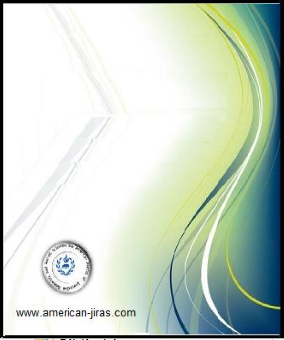
GENERAL INFORMATION
| HOME | ABOUT US | ARCHIVE | AIMS AND SCOP | AUTHORS | REVIEW | SUMIBMIT MANUSCRIPT | EDITORIAL BOARED | PUBLICATION FEE |

| HOME || ABOUT US || ARCHIVES || AIMS AND SCOP || AUTHORS || REVIEW|| SUBMIT MANUSCRIPT || EDITORIAL BOARD |

| Info-AJIRAS-® Journal ISSN 2429-5396 (Online) / Reference CIF/15/0289M |
American Journal of Innovative Research & Applied Sciences

|
American Journal of innovative
Research & Applied Sciences
Research & Applied Sciences
ISSN 2429-5396 (Online)
OCLC Number: 920041286
OCLC Number: 920041286

Authors Contact
*Correspondant author and authors Copyright © 2023:
| Dimbimalala, Randrianasoloharisoa 1 | Andry Nirina, Randrianarisoa 1 | and | Fils, Lahatra
Razafindramisa 1 |
Affiliation.
1. Laboratoire de Physique de la Matière et du Rayonnement | Université d’Antananarivo | Département de
Physique | Antananarivo | Madagascar |
This article is made freely available as part of this journal's Open Access:
| doi.org/10.5281/ZENODO.10029598 |



| ISSN: 2429-5396 (e) | https://www.american-jiras.com | |
| Web Site Form: v 0.1.05 | JF 22 Cours, Wellington le Clairval, Lillebonne | France |
| Web Site Form: v 0.1.05 | JF 22 Cours, Wellington le Clairval, Lillebonne | France |
| OCTOBER | VOLUME 17 | ISSUE N° 4 | 2023 |
| ARTICLES | Am. J. innov. res. appl. sci. Volume 17, Issue - 4 Pages 266-276 (October, 2023)
ABSTRACT
Background: The investigation of magnetism in transition metals is a pivotal aspect of studying artificial systems, particularly ultrathin metallic films. The magnetic properties of transition metals, especially vanadium, either independently or in conjunction with other transition metals, have consistently captivated researchers in this domain. Objectives: This study aims to explore the magnetic characteristics of vanadium on a niobium substrate using Density Functional Theory (DFT) with the DACAPO code. Methods: We examined systems comprising a single layer of vanadium or niobium, as well as vanadium on niobium. Our investigation encompassed the influence of layer relaxation, surface orientation, and the coupling of V/Nb. The analysis and interpretation of results were grounded in the study of atom positions and density of states for each atom. Results: The relaxation of layers composed solely of vanadium or niobium generally resulted in a reduction of the magnetic moments of atoms within those layers. Similarly, altering the surface orientation from (100) to (110) led to a decrease in the magnetic moment, reaching 0. This reduction is attributed to the increased proximity of atoms, facilitating the recovery of d orbitals for these atoms. In the V/Nb system, for the (100) surface orientation, relaxation also led to a moment reduction. Conversely, for the (110) orientation, each layer became antiferromagnetic after relaxation. The emergence of the antiferromagnetic moment is primarily attributed to the Body-Centered Cubic (BCC) structure of vanadium and niobium. Conclusions: Our findings indicate that, for the relaxed system, the magnetic moment of vanadium on the V/Nb surface is higher than that of vanadium in an isolated V system. Therefore, the practical utility of vanadium in conjunction with niobium surpasses that of vanadium alone.
Keywords: vanadium, niobium, ab-initio calculation, DFT, relaxation, magnetic moment.
Background: The investigation of magnetism in transition metals is a pivotal aspect of studying artificial systems, particularly ultrathin metallic films. The magnetic properties of transition metals, especially vanadium, either independently or in conjunction with other transition metals, have consistently captivated researchers in this domain. Objectives: This study aims to explore the magnetic characteristics of vanadium on a niobium substrate using Density Functional Theory (DFT) with the DACAPO code. Methods: We examined systems comprising a single layer of vanadium or niobium, as well as vanadium on niobium. Our investigation encompassed the influence of layer relaxation, surface orientation, and the coupling of V/Nb. The analysis and interpretation of results were grounded in the study of atom positions and density of states for each atom. Results: The relaxation of layers composed solely of vanadium or niobium generally resulted in a reduction of the magnetic moments of atoms within those layers. Similarly, altering the surface orientation from (100) to (110) led to a decrease in the magnetic moment, reaching 0. This reduction is attributed to the increased proximity of atoms, facilitating the recovery of d orbitals for these atoms. In the V/Nb system, for the (100) surface orientation, relaxation also led to a moment reduction. Conversely, for the (110) orientation, each layer became antiferromagnetic after relaxation. The emergence of the antiferromagnetic moment is primarily attributed to the Body-Centered Cubic (BCC) structure of vanadium and niobium. Conclusions: Our findings indicate that, for the relaxed system, the magnetic moment of vanadium on the V/Nb surface is higher than that of vanadium in an isolated V system. Therefore, the practical utility of vanadium in conjunction with niobium surpasses that of vanadium alone.
Keywords: vanadium, niobium, ab-initio calculation, DFT, relaxation, magnetic moment.
A COMPUTATIONAL STUDY ON THE MAGNETIC PROPERTIES OF VANADIUM LAYERS ON NIOBIUM SUBSTRATES: EFFECTS OF SURFACE ORIENTATION, RELAXATION, AND ELECTRONIC STRUCTURE
| Dimbimalala, Randrianasoloharisoa 1 | Andry Nirina, Randrianarisoa 1 | and | Fils, Lahatra Razafindramisa 1 |. Am. J. innov. res. appl. sci. 2023; 17(4):267-276.
| PDF FULL TEXT | | XML FILE | | Abstract and Author Contact | | https://doi.org/10.5281/ZENODO.10029598 |
| Dimbimalala, Randrianasoloharisoa 1 | Andry Nirina, Randrianarisoa 1 | and | Fils, Lahatra Razafindramisa 1 |. Am. J. innov. res. appl. sci. 2023; 17(4):267-276.
| PDF FULL TEXT | | XML FILE | | Abstract and Author Contact | | https://doi.org/10.5281/ZENODO.10029598 |